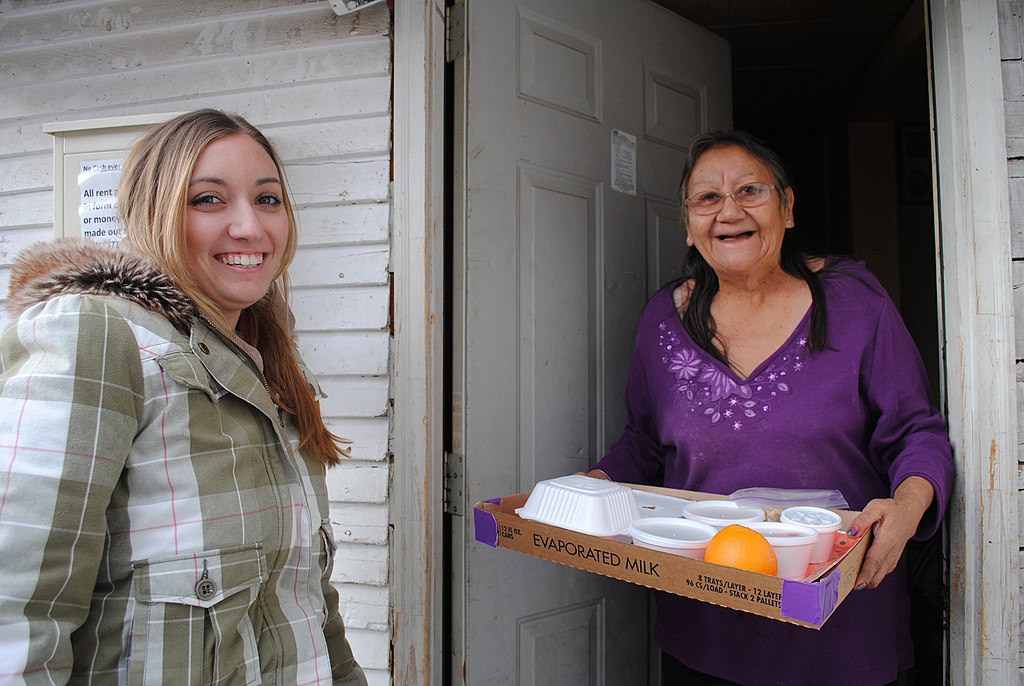SOCIAL INTEGRATION. UNIT 2.
DISABILITIES.

Types of Disabilities
In our society, people have a wide range of disabilities that can impact their everyday lives. One prevalent disability is blindness, where individuals are unable to see. These individuals rely on their other senses, such as touch and hearing, to navigate the world around them.
Deafness is another disability that affects people’s ability to hear sounds, requiring them to communicate through sign language or lip reading. Mobility impairments restrict a person’s ability to move freely and often necessitate the use of mobility aids like wheelchairs. Additionally, intellectual disabilities can affect a person’s cognitive abilities, making it more challenging for them to learn and understand information.
Useful Vocabulary Related to Disability
Try and use the following vocabulary when answering the question. Click to look up the definition in the dictionary
- accessibility (noun)
- Overcome (verb)
- Challenging (adjective)
- Disabled (adjective)
- Stand up for (phrasal verb)
- Discriminate (verb)
- Deal with (phrasal verb)
- Stigma (noun)
How would you define disability? Do you or anyone you know have a disability?. Write about it on your diary.
FAMOPUS PEOPLE AND DISABILITIES.
"What would the world look like without the contributions of people with disabilities?"

People with disabilities have made significant contributions across various fields, exemplifying resilience and excellence. For example, Beethoven composed some of his greatest works while losing his hearing, showcasing how creative talent transcends physical limitations. These individuals’ achievements offer valuable lessons in perseverance, creativity, and determination. Understanding the accomplishments of these extraordinary people can provide a blueprint for overcoming adversity and celebrating inclusivity. These narratives are not just tales of success; they are testaments to human potential and the power of the human spirit.
Helen Keller and Stevie Wonder are among those who have transcended their disabilities to achieve greatness, setting examples for generations.
Helen Keller’s Triumph Over Adversity
Helen Keller, born in 1880, faced significant challenges due to her blindness and deafness from a young age. Her life turned around when teacher Anne Sullivan taught her a manual writing system, enabling her to communicate effectively.
Keller’s achievements are numerous. She wrote several books about her own experiences, advocating for people with disabilities. She was also active in women’s suffrage and other social causes, using her platform to make a difference.
Keller became a famous person with a disability who changed perceptions, proving that limitations do not define one’s capabilities. Her legacy continues to inspire many around the world.
Stevie Wonder: Vision Beyond Sight
Stevie Wonder, a legendary musician, became blind shortly after birth. Despite this, he showed an early talent for music and signed with Motown Records at a young age. His career took off with hits that continue to resonate.
Wonder’s contributions extend beyond music. He has been a vocal advocate for various social issues, including civil rights. His life story has inspired a touching short film, showing his journey and influence.
Stevie Wonder’s career highlights his vision, which is not limited by sight. With numerous awards and countless hits, he remains an exemplary figure demonstrating that disability is not a barrier to success.
Exploring the realms of creativity and the arts, several individuals have overcome immense challenges to achieve remarkable feats. From influential painters to inspirational speakers, their contributions continue to resonate globally.
Frida Kahlo: Painting Through Pain
Frida Kahlo, the renowned Mexican painter, utilized her art to express her physical and emotional turmoil. After contracting a mysterious illness and suffering a severe accident that left her right leg affected, Kahlo turned her pain into profound works of art.
Her paintings, known for their vivid colors and symbolic imagery, often depict her suffering and inner strength. Kahlo’s art not only made a significant impact on the surrealist movement but also earned her global acclaim. Her works have been showcased in numerous exhibitions and have inspired countless artists and art lovers worldwide.
Nick Vujicic: A Motivational Phenomenon
Nick Vujicic, born with Tetra-Amelia syndrome, a rare disorder characterized by the absence of all four limbs, has become a beacon of hope and resilience. Despite his physical limitations, Vujicic has thrived as a motivational speaker, author, and entrepreneur.
He gained international fame through his appearances in inspiring productions such as The Butterfly Circus, where he played a man without limbs who rises to his full potential. Vujicic’s message emphasizes the power of faith, perseverance, and the belief that everyone has a unique purpose. His motivational speaking engagements and books have touched millions, encouraging individuals to overcome their challenges and pursue their dreams.
Answer. Choose the correct option.
1. What significant teaching method did Anne Sullivan use to help Helen Keller communicate?
a. Sign language only
b. Manual writing system
c. Braille exclusively
d. Lip reading techniques
2. Which social cause was Helen Keller notably involved in besides disability advocacy?
a. Environmental protection
b. Animal rights
c. Women's suffrage
d. Child labor laws
3. At what stage in his life did Stevie Wonder become blind?
a. During childhood
b. In his teenage years
c. At birth
d. Shortly after birth
4. What medical condition did Frida Kahlo experience that influenced her artwork?
a. A severe accident affecting her right leg
b. Chronic migraines
c. Respiratory illness
d. Muscular dystrophy
5. In which creative field did Beethoven continue to excel despite his disability?
a. Painting
b. Dance
c. Literature
d. Musical composition
6. What is Nick Vujicic's primary professional role?
a. Motivational speaker
b. Professional athlete
c. Political activist
d. Medical researcher
7. Which record label signed Stevie Wonder at a young age?
a. Columbia Records
b. Atlantic Records
c. Motown Records
d. RCA Records
8. What syndrome was Nick Vujicic born with?
a. Muscular dystrophy
b. Tetra-Amelia syndrome
c. Cerebral palsy
d. Multiple sclerosis
9. How did Frida Kahlo primarily express her physical and emotional struggles?
a. Through poetry
b. Through sculpture
c. Through painting
d. Through music
10. What aspect of Helen Keller's legacy is most emphasized in historical accounts?
a. Her political activism
b. Her writing career
c. Her teaching methods
d. Her ability to overcome limitations
READING. Advice for living with a disability.
What are some of the challenges mentioned in the text that people with disabilities face?
According to the advice provided, why is it important to never be embarrassed about your disability?
How does the author suggest using humor to address discomfort from others regarding disabilities?
What reasons does the text give for ignoring negative opinions from others about your disability?
How can social media play a role in connecting with others who have disabilities, according to the text?
What is the significance of accepting help from others, as stated in the advice?
What does the author mean by saying "you are more than your disability"?
Why does the author encourage readers to maintain a sense of humor about their disability?
How does the text suggest that individuals with disabilities can enhance their social experiences?
What overall message does the author aim to convey through the collection of advice shared in the text?
Possible answers.
- Challenges include constant healthcare needs and struggles for equality in the workplace.
- It is important because it emphasizes self-worth and positivity despite societal challenges.
- Humor can help ease the discomfort of others and improve social interactions.
- Ignoring negative opinions is suggested as they often stem from jealousy or misunderstanding.
- Social media allows individuals to connect, form groups, and share experiences with others who can relate.
- Accepting help signifies independence and acknowledges that everyone needs assistance at times.
- The statement highlights the multifaceted identity of individuals beyond their disabilities.
- Humor can improve emotional resilience and help navigate difficult situations.
- Individuals can enhance their social experiences by engaging with supportive communities online.
- The overall message is one of empowerment, resilience, and the importance of community and humor in living with a disability.
A street cat named Bob.
Watch the film and write your comments on your diary.
The therapeutic use of animals dates back many centuries. Florence
Nightingale recognized the healing impact of pet therapy and Freud noted
that the presence of his pet dog in the room helped his patients relax.
There are many emotional and psychological benefits of animal-assisted therapy, including decreased anger and loneliness, increased calmness and optimism, and a sense of being loved and wanted.
EXTRA READING. How can pets help deal with substance abuse?
LISTENING
2. What did you do last weekend?
WRITING
1. How to write an application letter for a summer job.
2. How to write a mail to book a hotel room
MEALS ON WHEELS

Meals on Wheels is a program that delivers meals to individuals at home who are unable to purchase or prepare their own meals. The name is often used generically to refer to home-delivered meals programs, not all of which are actually named "Meals on Wheels". Many of the housebound recipients are the elderly, and many of the volunteers are also elderly but able-bodied and able to drive automobiles.
Research shows that home-delivered meal programs significantly improve diet quality, reduce food insecurity and improve quality-of-life among the recipients.[1][2] The programs also reduce government expenditure by reducing the need of recipients to use hospitals, nursing homes or other expensive community-based services.
History
Meals on Wheels originated in the United Kingdom during the Blitz in the Second World War, when many people lost their homes and therefore the ability to cook their own food. The Women's Volunteer Service for Civil Defence (WVS, later WRVS) provided food for these people. The name "Meals on Wheels" derived from the delivery method of bringing meals in prams, carts, bicycles with basket, cars and other wheeled vehicles. The concept of delivering meals to those unable to prepare their own evolved into the modern programmes that deliver mostly to the housebound elderly, sometimes free, or at a small charge.[3][4][5]
Do you know anything similar in your country? ( in your diary)
Watch the video and give your opinion of the project.
GAZA
What is happening in Gaza? Do you consider it a genocide?
Watch this moving film and comment on it.
How much do you know of what's happening?
How does this film show a different perspective?
READING COMPREHENSION EXERCISES.
3. The unhealthiest places in the world.
EXTRA FILM.
WRITING.
Social Work Intervention Examples
For the purpose of this article about social work intervention examples, we are going to be describing interventions at the micro-level, which are between a social worker and an individual, family, or small group.
There are many different types of social workers (school, elderly, social services, hospital, home health, family and child, substance abuse, etc.), so we’ll go through just a few examples of social work interventions below but know there are many more.
Social Work Intervention Plan Example:
- Substance Abuse: For someone coming in for help with a substance abuse issue, a social worker may include both medical and mental health support for their intervention plan in social work. They may also try to encourage the person to put more energy into their positive relationships and discourage negative ones.
- Geriatric Care: For an elderly client that can no longer take care of themselves, the social worker may include the family in the social work intervention plan and include emotional support and building community connections in an assisted living facility to help everyone through the transition.
- Long-term Medical Issue: For a patient that has a long-term medical issue, the social worker may include on their list of social work interventions outpatient referral to a therapist, introduction to a community support group, and a referral to financial aid resources to help with medical bills.
- Child Neglect: In the case of a young child being left home alone, a social worker may use an intervention plan social work example designed to give the parents support through free childcare resources and parenting classes.
Read more at Social Work Portal: https://www.socialworkportal.com/social-work-intervention/

Comments
Post a Comment